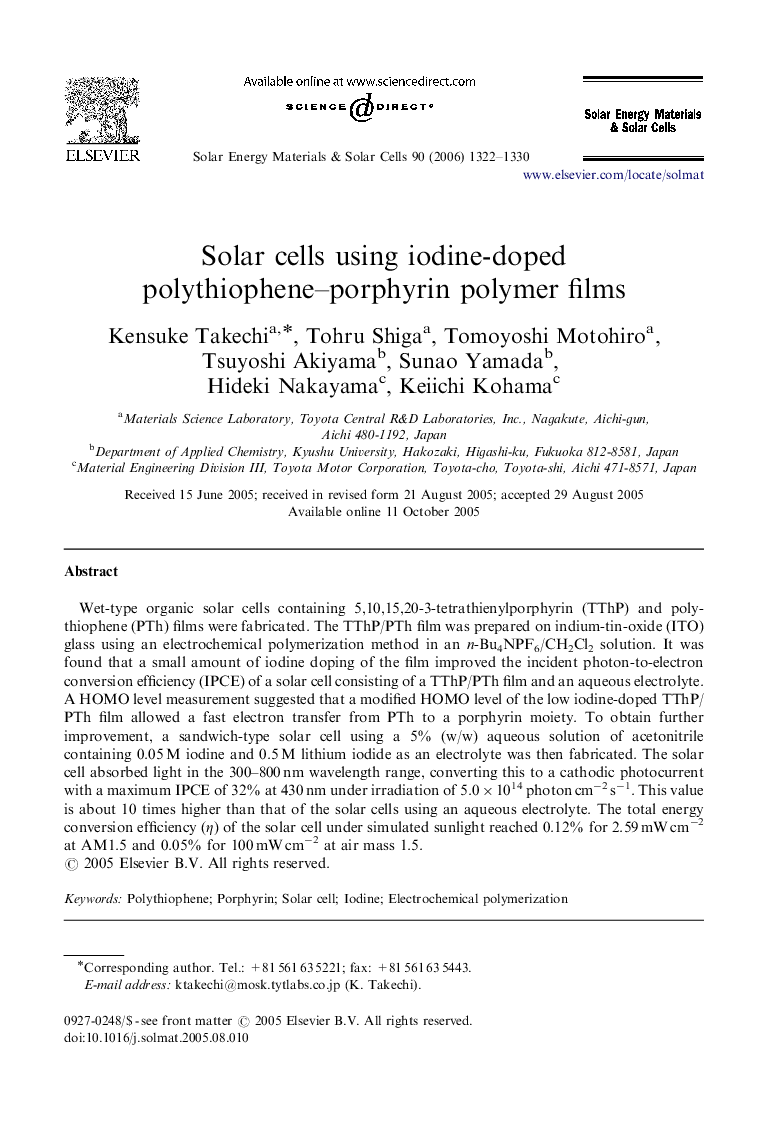| Article ID | Journal | Published Year | Pages | File Type |
|---|---|---|---|---|
| 81083 | Solar Energy Materials and Solar Cells | 2006 | 9 Pages |
Wet-type organic solar cells containing 5,10,15,20-3-tetrathienylporphyrin (TThP) and polythiophene (PTh) films were fabricated. The TThP/PTh film was prepared on indium-tin-oxide (ITO) glass using an electrochemical polymerization method in an n-Bu4NPF6/CH2Cl2 solution. It was found that a small amount of iodine doping of the film improved the incident photon-to-electron conversion efficiency (IPCE) of a solar cell consisting of a TThP/PTh film and an aqueous electrolyte. A HOMO level measurement suggested that a modified HOMO level of the low iodine-doped TThP/PTh film allowed a fast electron transfer from PTh to a porphyrin moiety. To obtain further improvement, a sandwich-type solar cell using a 5% (w/w) aqueous solution of acetonitrile containing 0.05 M iodine and 0.5 M lithium iodide as an electrolyte was then fabricated. The solar cell absorbed light in the 300–800 nm wavelength range, converting this to a cathodic photocurrent with a maximum IPCE of 32% at 430 nm under irradiation of 5.0×1014 photon cm−2 s−1. This value is about 10 times higher than that of the solar cells using an aqueous electrolyte. The total energy conversion efficiency (η) of the solar cell under simulated sunlight reached 0.12% for 2.59 mW cm−2 at AM1.5 and 0.05% for 100 mW cm−2 at air mass 1.5.
